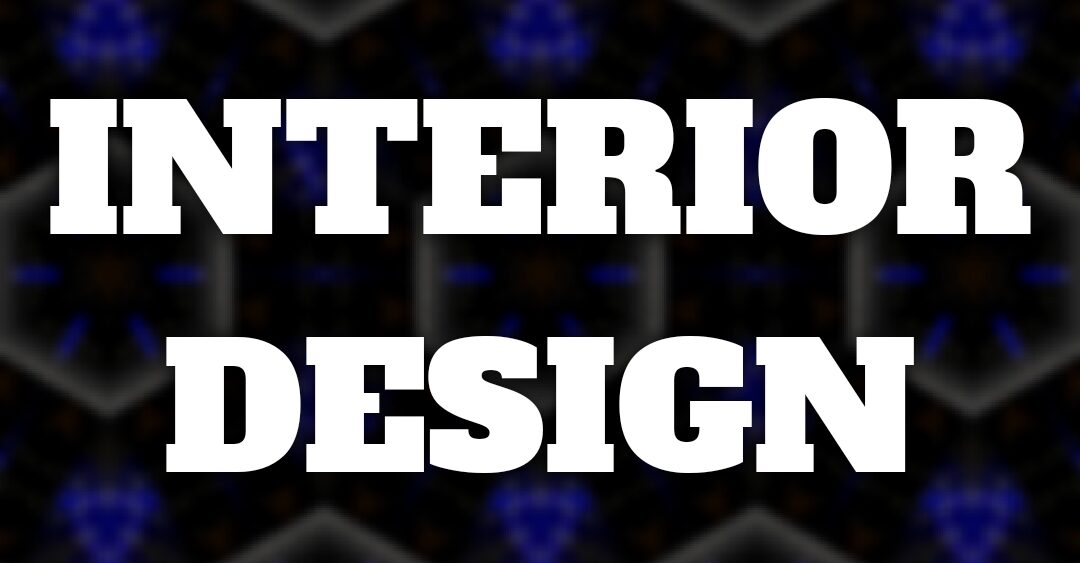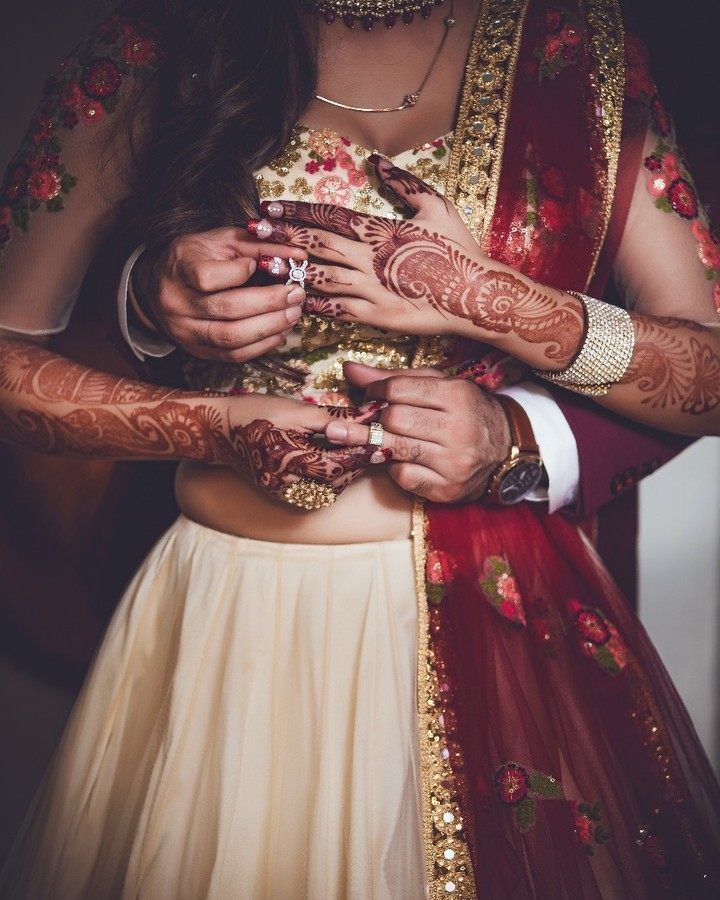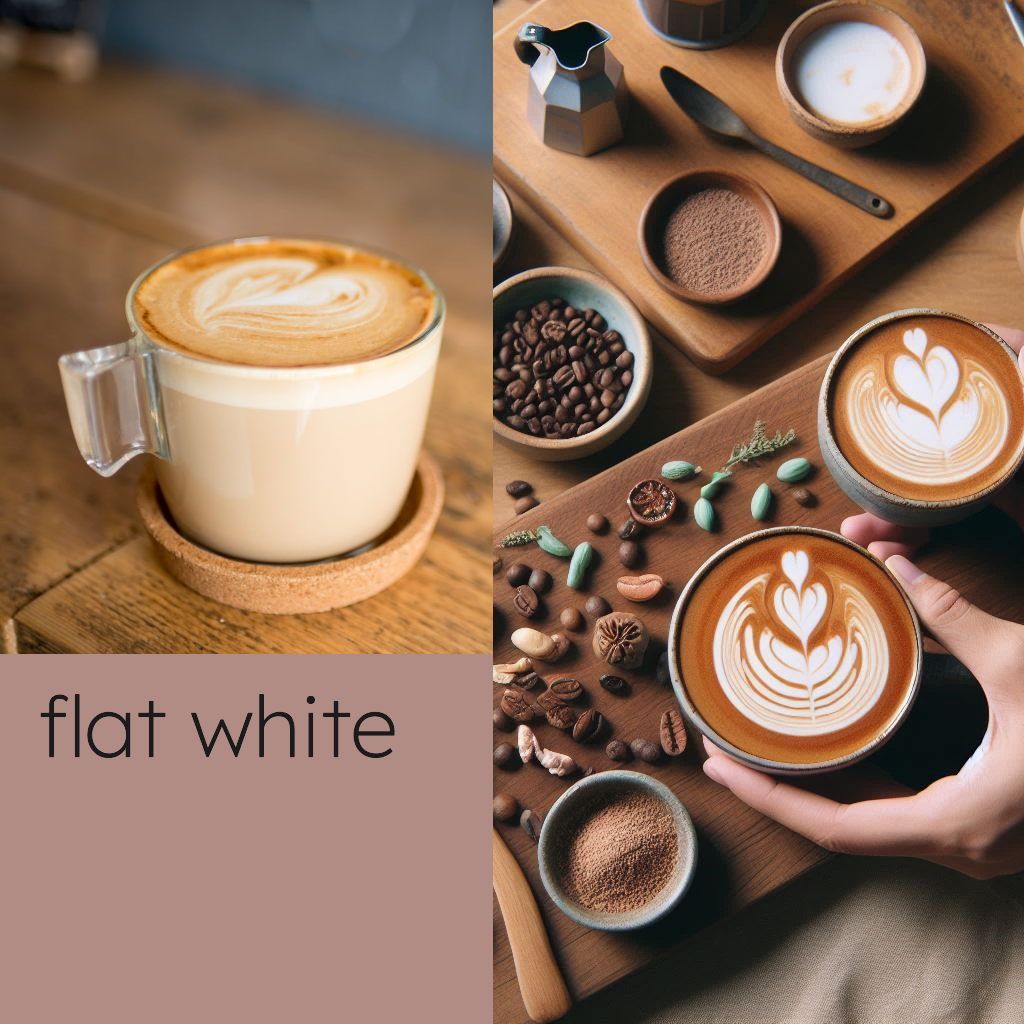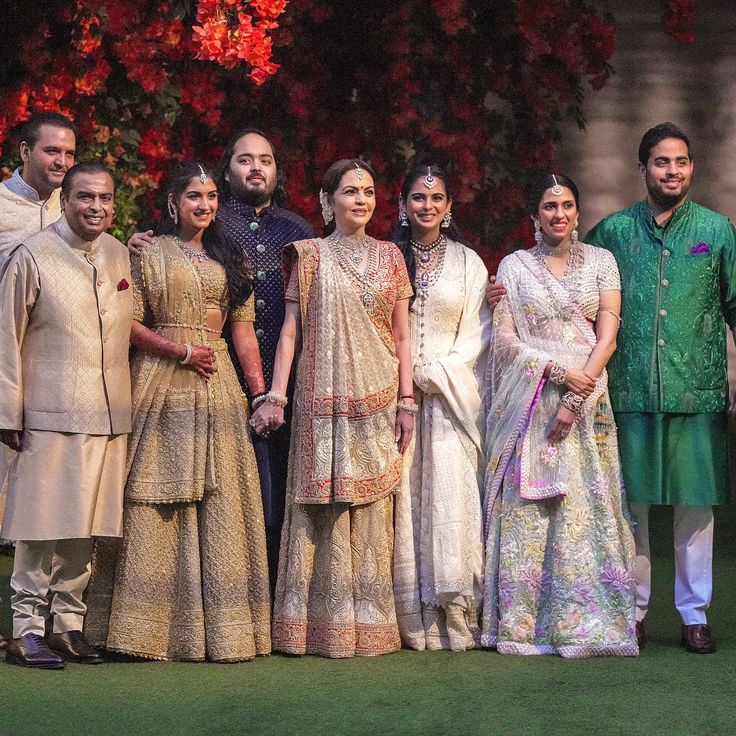Home Interior Designs
Interior design is a multifaceted discipline that combines creativity, functionality, and aesthetics to create harmonious and visually appealing spaces. It involves the art and science of enhancing the interiors of residential, commercial, and public spaces to meet the needs and preferences of the occupants. Interior designers are responsible for conceptualizing, planning, and executing design solutions that optimize the use of space while considering factors such as ergonomics, lighting, materials, colors, and furnishings.
The field of interior design encompasses a wide range of elements and considerations that contribute to the overall design of a space.
Table of Contents
These elements include:
- Space Planning: Space planning involves analyzing and organizing the layout of a space to maximize its functionality and efficiency. Interior designers assess the available area and determine how best to allocate space for different activities, furniture, and traffic flow.
- Color Scheme and Selection: Colors have a profound impact on the atmosphere and mood of a space. Interior designers carefully choose color schemes that align with the desired ambiance and purpose of the space. They consider factors such as lighting, room size, and the intended emotional response when selecting colors.
- Materials and Finishes: The selection of appropriate materials and finishes is crucial in creating a cohesive and visually appealing interior. Interior designers consider the durability, aesthetics, and maintenance requirements of materials such as flooring, wall coverings, and countertops. They also take into account the texture, patterns, and finishes that contribute to the overall design concept.
- Lighting Design: Lighting plays a crucial role in enhancing the functionality and ambiance of a space. Interior designers strategically plan the placement of lighting fixtures to achieve the desired lighting levels and effects. They consider factors such as natural light sources, task lighting requirements, and the use of ambient and accent lighting to create a visually pleasing and functional environment.
- Furniture and Furnishings: Selecting the right furniture and furnishings is essential in creating a comfortable and functional space. Interior designers consider the style, scale, and proportion of furniture pieces to ensure they complement the overall design concept. They also consider the ergonomic needs of the occupants and the spatial constraints of the room.
- Textiles and Accessories: Textiles, such as curtains, rugs, and upholstery, add texture, color, and warmth to a space. Interior designers select textiles that complement the design concept and consider factors such as durability and maintenance. Accessories, such as artwork, decorative objects, and plants, add personality and visual interest to the space.
- Sustainable Design: With a growing emphasis on environmental consciousness, sustainable design practices have become integral to the field of interior design. Interior designers incorporate eco-friendly materials, energy-efficient technologies, and sustainable practices to create environmentally responsible spaces.
- Building Codes and Regulations: Interior designers must have a solid understanding of building codes and regulations to ensure that their designs comply with safety and accessibility standards. They must consider factors such as fire safety, electrical systems, and accessibility requirements when developing design plans.
- Collaboration and Communication: Interior designers often collaborate with architects, contractors, and other professionals involved in the construction or renovation process. Effective communication and collaboration skills are essential in coordinating with the various stakeholders to ensure the design vision is successfully executed.
Interior design is a dynamic field that combines creativity, functionality, and aesthetics to transform spaces into visually appealing and functional environments. From space planning and color selection to materials, lighting, and furnishings, interior designers consider a multitude of factors to create captivating interiors that meet the needs and preferences of the occupants. With their expertise and attention to detail, interior designers play a vital role in shaping the way we experience and interact with the spaces around us.
IMPORTANT FACTOR OF INTERIOR DESIGN
- Introduction to Interior Design
- Definition and scope of interior design
- Historical overview of interior design as an art form
- Evolution of interior design practices and styles
- Elements of Interior Design
- Colors and their psychological impact
- Materials, textures, and their influence on aesthetics
- Patterns, motifs, and their role in creating visual interest
- Lighting and its impact on ambiance and mood
- Furniture and accessories as key design elements
- Principles of Interior Design
- Balance and its application in creating visual harmony
- Proportion and scale for achieving proper spatial relationships
- Unity and coherence in design composition
- Rhythm and repetition for creating movement and flow
- Emphasis and focal points to draw attention
- Styles and Themes in Interior Design
- Overview of popular design styles (e.g., modern, contemporary, traditional, minimalist, etc.)
- Explanation of their distinguishing features, color palettes, and furniture choices
- Historical context and cultural influences on different design styles
- Exploration of thematic designs (e.g., coastal, industrial, Scandinavian, etc.)
- Space Planning and Layout
- Importance of space planning in optimizing functionality and flow
- Considerations for different types of spaces (e.g., residential, commercial, hospitality)
- Ergonomics and user-centered design principles
- Use of zoning and circulation patterns for efficient spatial organization
- Materials and Finishes
- Selection of appropriate materials for various surfaces (walls, floors, ceilings)
- Analysis of different finishes (e.g., paint, wallpaper, tiles, wood, etc.)
- Sustainability and eco-friendly materials in interior design
- Integration of materials and finishes to create cohesive design schemes
- Color Theory and Application
- Understanding the color wheel and color relationships
- Psychological effects of colors on emotions and mood
- Color schemes and their application in different spaces
- Use of color accents and focal points
- Lighting Design
- Importance of lighting in enhancing aesthetics and functionality
- Natural vs. artificial lighting considerations
- Types of lighting fixtures and their applications
- Layering lighting techniques for different purposes (ambient, task, accent)
- Sustainability and Green Design
- Principles of sustainable design in interior spaces
- Use of eco-friendly materials and energy-efficient technologies
- Incorporating natural elements and biophilic design concepts
- Impact of sustainable design on health and well-being
- Role of Technology in Interior Design
- Interior Design and Well-being
- Connection between interior design and human well-being
- Psychological and physiological impacts of well-designed spaces
- Incorporating elements of comfort, tranquility, and positive energy
- Designing for specific user needs (e.g., accessibility, aging in place).
Future Of Interior Design
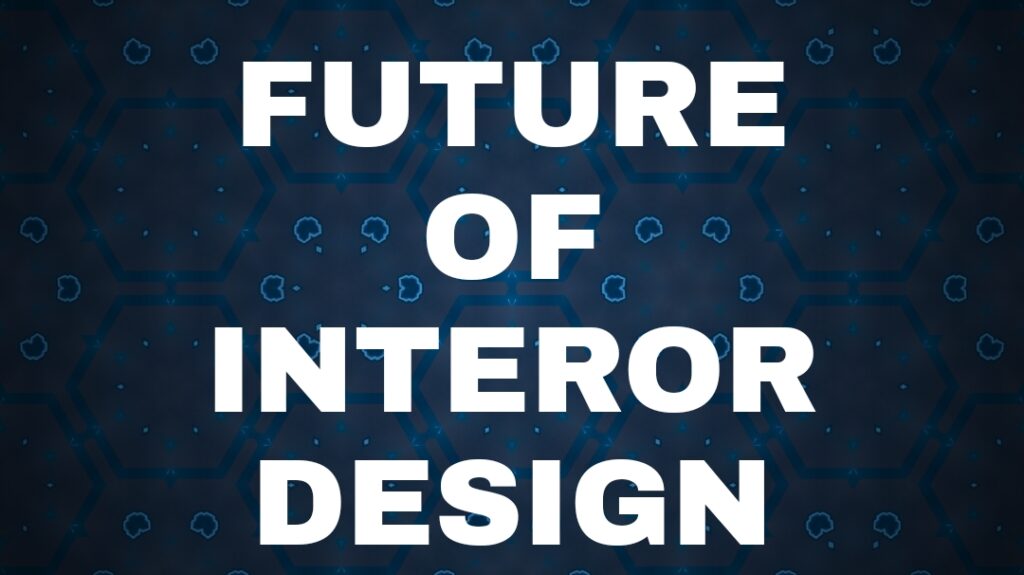
The future of interior design is likely to be shaped by a number of key trends, including:
- Sustainability: Sustainability is becoming increasingly important in all aspects of our lives, including interior design. Designers are increasingly using sustainable materials and practices in their work, and clients are demanding more sustainable design solutions.
- Technology: Technology is also playing a major role in shaping the future of interior design. Smart homes, virtual reality, and augmented reality are all being used to create more innovative and immersive design experiences.
- Wellness: People are becoming increasingly aware of the importance of wellness, and this is leading to a demand for interior designs that promote physical and mental health. Designers are using natural materials, biophilic design elements, and circadian lighting to create spaces that are both stylish and supportive of well-being.
- Personalization: People are also demanding more personalized interior designs that reflect their individual style and needs. Designers are using data and analytics to create designs that are tailored to each client’s unique preferences.
Here are some specific trends to watch in the coming years:
- Sustainable materials: Designers are increasingly using sustainable materials in their work, such as recycled materials, reclaimed wood, and bamboo. These materials are not only environmentally friendly, but they can also add a unique and stylish touch to any space.
- Smart homes: Smart homes are becoming increasingly popular, and this is leading to a demand for interior designs that can accommodate smart technology. Designers are creating spaces that are integrated with smart home systems, such as lighting, thermostats, and security systems.
- Biophilic design: Biophilic design is a design approach that incorporates elements of nature into interior spaces. This can include things like plants, natural light, and natural materials. Biophilic design has been shown to have a number of benefits for human health, including reducing stress and improving mood.
- Circadian lighting: Circadian lighting is a type of lighting that is designed to mimic the natural light cycle. This type of lighting can help to regulate sleep patterns and improve mood. Designers are increasingly using circadian lighting in interior spaces to create healthier and more comfortable environments.
- Personalized design: Designers are using data and analytics to create designs that are tailored to each client’s unique preferences. This can include things like using the client’s favorite colors and materials, and designing spaces that accommodate the client’s specific needs and lifestyle.
- Multifunctional spaces: As people spend more time at home, they are looking for ways to make their homes more multifunctional. Designers are creating spaces that can be used for a variety of purposes, such as working, learning, and relaxing.
- Flexible furniture: Flexible furniture is another trend that is gaining popularity. Designers are creating furniture that can be easily moved and reconfigured to accommodate different needs.
- Bold colors and patterns: Bold colors and patterns are also making a comeback in interior design. Designers are using these elements to create spaces that are both stylish and eye-catching.
These are just a few of the trends that are likely to shape the future of interior design. As technology continues to evolve and people become more aware of the importance of sustainability and wellness, we can expect to see even more innovative and exciting designs in the years to come.
Cozy Home is all about creating a space
Creating a cozy home is all about creating a space that is warm, inviting, and comfortable. There are a number of things you can do to achieve this look and feel, including:
- Use warm colors and materials. Warm colors, such as red, orange, and yellow, can create a sense of warmth and coziness in your home. You can use these colors in your paint, furniture, and accessories. Warm materials, such as wood, wool, and fur, can also add to the cozy factor.
- Add soft textures. Soft textures, such as plush fabrics and fluffy pillows, can make your home feel more inviting and comfortable. Don’t be afraid to mix and match different textures to create a layered and inviting look.
- Create a focal point. A focal point can help to anchor your space and make it feel more cohesive. This could be a fireplace, a large piece of art, or a cozy seating area.
- Don’t forget the lighting. Lighting plays a big role in creating a cozy atmosphere. Avoid overhead lighting and opt for softer, more indirect lighting, such as table lamps and floor lamps. You can also use candles to add a touch of warmth and romance.
- Add personal touches. The best way to make your home feel cozy is to add personal touches that reflect your style and interests. This could include family photos, souvenirs from your travels, or artwork that you love.
Here are some additional tips for creating a cozy home:
- Use rugs and carpets. Rugs and carpets can help to add warmth and texture to your floors. They can also help to define different areas in your home.
- Add pillows and throws. Pillows and throws are a great way to add comfort and style to your sofa, bed, and chairs. They can also be used to add pops of color and pattern.
- Don’t forget the greenery. Plants can add life and vitality to your home. They can also help to purify the air. If you don’t have a lot of time to care for plants, there are many low-maintenance options available.
- Create a cozy reading nook. A cozy reading nook is the perfect place to relax and unwind. Find a comfortable spot in your home and add a comfortable chair, a good lamp, and a stack of your favorite books.
- Make your bed every day. A made bed can make your bedroom feel more tidy and inviting. It can also help you to relax and wind down at the end of the day.
Creating a cozy home doesn’t have to be expensive or time-consuming. By following these tips, you can create a space that is warm, inviting, and comfortable for you and your loved ones.
The Psychology of Color in Interior Design: Choosing the Right Hues for Your Space
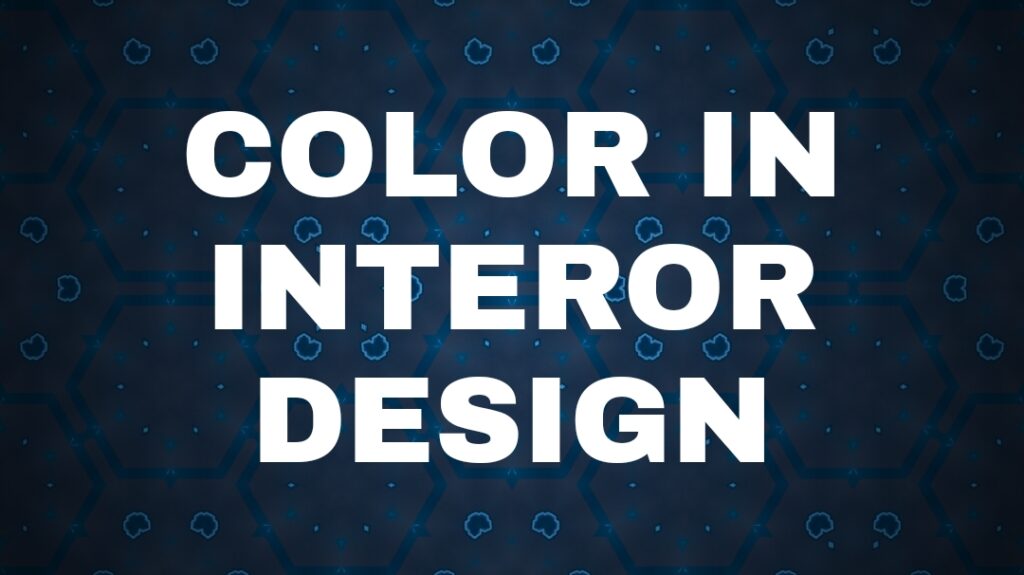
The psychology of color in interior design is the study of how different colors affect our mood, emotions, and behavior. Colors can have a powerful impact on how we perceive a space, and they can be used to create a variety of different atmospheres.
When choosing colors for your home, it is important to consider the overall mood you want to create. If you want to create a relaxing space, for example, you might choose cool colors such as blue, green, and purple. If you want to create a more energetic space, you might choose warm colors such as red, orange, and yellow.
Here is a brief overview of the psychology of some of the most popular colors used in interior design:
- Red: Red is a stimulating color that can evoke feelings of excitement, passion, and danger. It is often used in accent colors to add a pop of energy to a space.
- Orange: Orange is a cheerful and optimistic color that can evoke feelings of warmth, happiness, and creativity. It is often used in kitchens and dining rooms to create a welcoming atmosphere.
- Yellow: Yellow is a bright and sunny color that can evoke feelings of happiness, optimism, and energy. It is often used in living rooms and playrooms to create a cheerful and inviting space.
- Green: Green is a calming and refreshing color that can evoke feelings of nature, peace, and tranquility. It is often used in bedrooms and bathrooms to create a relaxing atmosphere.
- Blue: Blue is a calming and soothing color that can evoke feelings of trust, loyalty, and security. It is often used in bedrooms and offices to create a peaceful and productive work environment.
- Purple: Purple is a luxurious and sophisticated color that can evoke feelings of royalty, mystery, and creativity. It is often used in accent colors to add a touch of elegance to a space.
Of course, the psychology of color is a complex topic, and there is no one-size-fits-all approach to choosing colors for your home. The best way to choose colors is to experiment and see what feels right to you. Consider the overall mood you want to create in each space, and choose colors that you find appealing and inspiring.
Here are some additional tips for choosing the right colors for your home:
- Consider the natural light in each space. Natural light can have a big impact on how colors appear. If a space has a lot of natural light, you can choose bolder colors. If a space has less natural light, you might want to choose lighter colors to make the space feel brighter and more open.
- Use the color wheel to create harmony. The color wheel can help you to choose colors that complement each other. For example, complementary colors are opposite each other on the color wheel and create a strong contrast. Analogous colors are next to each other on the color wheel and create a more harmonious look.
- Don’t be afraid to experiment. The best way to find the right colors for your home is to experiment. Try different color combinations and see what looks best to you. Don’t be afraid to make changes if you’re not happy with the results.
By following these tips, you can choose colors that will create the perfect atmosphere for your home.
Minimalist Interior Design: Less is More for a Clutter-Free and Serene Home
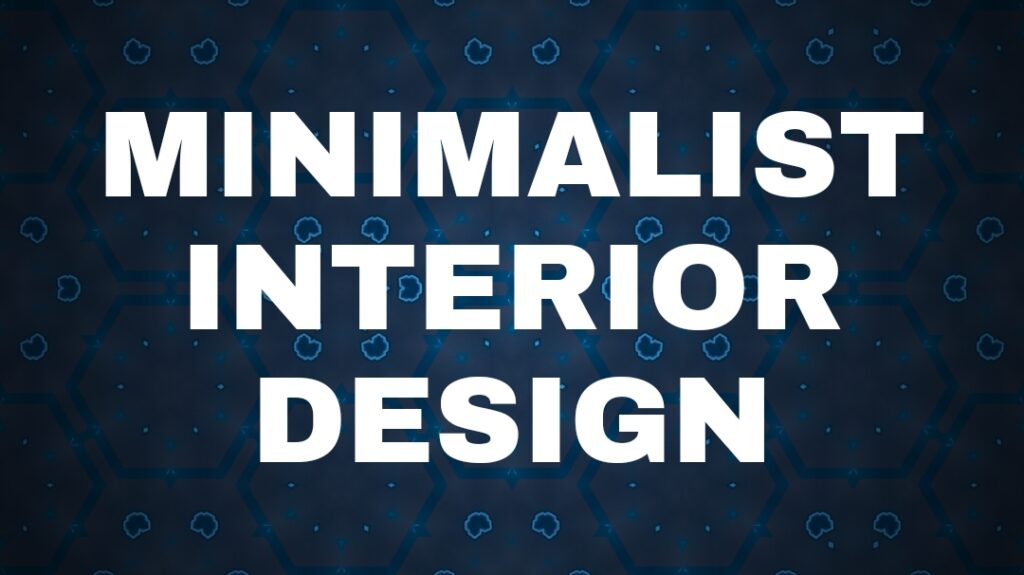
Minimalist interior design is a style that focuses on simplicity and functionality. It is based on the principle that “less is more,” and that a space can be both beautiful and comfortable without being cluttered.
Minimalist design is often characterized by clean lines, open spaces, and a limited color palette. Minimalist designers use furniture, accessories, and materials sparingly, and they focus on creating a sense of balance and harmony.
Minimalist interior design has a number of benefits, including:
- It is less cluttered and more relaxing. A minimalist space is easier to keep clean and organized, and it can be more relaxing to be in.
- It is more versatile. A minimalist space can be easily adapted to different needs and styles. For example, you can add or remove furniture and accessories to change the look of a space.
- It is more sustainable. Minimalist design encourages you to consume less and to choose high-quality items that will last.
If you are interested in creating a minimalist home, here are a few tips:
- Start by decluttering. Get rid of anything you don’t use or love. This will help to create a more open and spacious home.
- Choose a limited color palette. A minimalist space typically uses a neutral color palette with one or two accent colors. This helps to create a sense of calm and unity.
- Focus on functionality. When choosing furniture and accessories, focus on pieces that are both functional and stylish. Avoid anything that is purely decorative.
- Use space wisely. Think carefully about how you use your space. For example, you can use multipurpose furniture to save space.
- Add personal touches. Even though minimalist design is about simplicity, it is important to add personal touches to your home. This will help to make your space feel unique and inviting.
Here are some additional tips for creating a minimalist home:
- Use natural light. Natural light can make a space feel brighter and more open. If possible, position your furniture to take advantage of natural light.
- Use mirrors. Mirrors can help to reflect light and create the illusion of more space.
- Choose furniture that is the right scale. Furniture that is too large or too small can make a space feel cramped or unbalanced.
- Use vertical space. Don’t forget about the walls! You can use shelves and cabinets to store items and to display your favorite things.
- Keep it clean. A minimalist space is easier to keep clean and organized. Make sure to clean and declutter regularly.
Creating a minimalist home doesn’t have to be expensive or time-consuming. By following these tips, you can create a space that is both stylish and functional.
Kitchen and Bathroom Interior Design: Balancing Style and Functionality

The kitchen and bathroom are two of the most important rooms in a house, and it is important to strike a balance between style and functionality when designing these spaces.
Kitchens and bathrooms should be both stylish and functional. They should be a reflection of your personal style and taste, but they should also be comfortable and efficient to use.
Here are some tips for balancing style and functionality in your kitchen and bathroom:
Kitchen
- Choose a layout that works for you. The layout of your kitchen should be designed to maximize efficiency and workspace. Consider how you use your kitchen and choose a layout that accommodates your needs.
- Choose the right appliances. When choosing appliances, consider your lifestyle and cooking habits. If you cook a lot, you might want to invest in high-quality appliances. If you don’t cook as often, you might be able to get away with less expensive appliances.
- Consider the storage space. Kitchens need a lot of storage space for food, cookware, and other kitchen essentials. Make sure to choose cabinets and drawers that provide enough storage space for your needs.
- Add personal touches. Don’t forget to add personal touches to your kitchen to make it feel like your own. This could include adding artwork, plants, or other decorative items.
Bathroom
- Choose a layout that works for you. The layout of your bathroom should be designed to maximize efficiency and space. Consider how you use your bathroom and choose a layout that accommodates your needs.
- Choose the right fixtures. When choosing bathroom fixtures, consider your style and budget. There are a wide variety of bathroom fixtures available, so you’re sure to find something that fits your needs and style.
- Consider the storage space. Bathrooms need storage space for toiletries, towels, and other bathroom essentials. Make sure to choose cabinets and drawers that provide enough storage space for your needs.
- Add personal touches. Don’t forget to add personal touches to your bathroom to make it feel like your own. This could include adding artwork, plants, or other decorative items.
Here are some additional tips for balancing style and functionality in your kitchen and bathroom:
- Use neutral colors as a base. Neutral colors are a great way to create a timeless look in your kitchen and bathroom. You can add pops of color with accessories and décor.
- Choose high-quality materials. When choosing materials for your kitchen and bathroom, it is important to choose high-quality materials that will stand up to wear and tear.
- Don’t be afraid to mix and match. You can mix and match different styles and materials to create a unique look in your kitchen and bathroom.
- Consider the lighting. The lighting in your kitchen and bathroom should be both functional and stylish. Make sure to choose lighting fixtures that provide enough light for tasks, but also create a warm and inviting atmosphere.
By following these tips, you can create a kitchen and bathroom that is both stylish and functional.
FAQs based on Interior Design
What is the difference between interior design and interior decorating?
Interior design: Focuses on the overall spatial planning, functionality, and flow of a space, often dealing with architectural elements and structural changes.
Interior decorating: Deals primarily with the aesthetic finishes, furniture, and decorative elements within an existing space.
Do I need an interior designer?
This depends on your experience, budget, and project complexity. Designers can be valuable for guidance, space planning, and access to trade resources.
What’s the difference between style and trend?
Style: A timeless aesthetic with distinct characteristics (e.g., rustic, mid-century modern).
Trend: A temporary, popular fashion in design elements (e.g., patterned wallpaper, metallic accents).
How much does interior design cost?
Costs vary depending on project scope, location, and designer fees. Expect to pay a percentage of the project budget or an hourly rate.
What are the key elements of interior design?
Space planning, color palette, furniture layout, lighting, textures, materials, and accessories.
How do I define my personal style?
Create mood boards, browse design magazines and websites, visit showrooms, and identify elements you love in existing spaces.
What are some common design mistakes to avoid?
Overcrowding furniture, mismatched lighting, ignoring scale and proportion, clashing colors, and neglecting storage.
How do I maximize a small space?
Use light colors, utilize mirrors, choose multi-functional furniture, prioritize vertical storage, and maintain clear sightlines.
Where can I find design inspiration?
Pinterest, Instagram, design blogs, magazines, travel, movies, nature, and even historical references.
What are some online tools and resources for interior design?
Mood board apps, 3D visualization software, online furniture stores, design blogs, and virtual tours of inspiring spaces.
How do I choose the right color palette for my space?
Consider the room’s function, natural light, desired mood, and overall style. Test paint samples before committing.
What are some foolproof color combination tips?
Use the 60-30-10 rule (60% dominant color, 30% secondary color, 10% accent color). Consider analogous or complementary color schemes.
What are the different types of lighting and their uses?
Ambient lighting (general illumination), task lighting (focused light for specific activities), and accent lighting (highlights decorative elements).
How can I use lighting to create atmosphere?
Warm lighting for cozy spaces, cool lighting for energizing spaces, layered lighting for depth, and dimmers for mood control.
What are some natural lighting strategies for dark spaces?
Light-colored walls, large windows, mirrors, skylights, and reflective surfaces.
How do I choose the right furniture scale for my space?
Measure your space and furniture pieces carefully. Avoid overwhelming small spaces with large furniture.
What are some tips for creating a cohesive furniture layout?
Define traffic flow, consider furniture purpose and size, create conversation areas, and balance symmetry with asymmetry.
How can I mix and match different styles for a unique look?
Choose a unifying element like color, texture, or material. Opt for timeless pieces as bases and layer in statement accents.
What are some budget-friendly decorating tips?
DIY projects, repurposed furniture, vintage finds, flea market treasures, nature elements, and strategic use of color and accessories.
How can I accessorize my space without going overboard?
Start with a few key pieces, vary heights and textures, utilize negative space, and focus on items that bring you joy or tell a story.
What are some sustainable interior design practices?
Choose eco-friendly materials, invest in durable pieces, repurpose and upcycle, support local artisans, and prioritize natural light for energy efficiency.
How can I make my home feel more functional and comfortable?
Prioritize storage solutions, optimize traffic flow, choose ergonomic furniture, incorporate natural elements, and ensure proper ventilation and temperature control.


